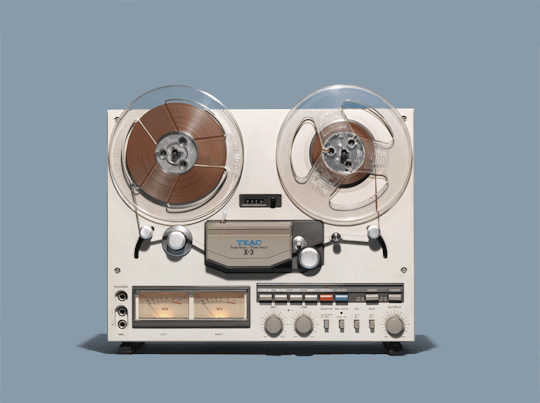Good Old Games and Other LORE. GO, GO, Left-Over Remnants of Erstwhile.
Don't wanna be here? Send us removal request.
Photo

Vault Dweller's Quick Reference Card – A Handy Guide to Help You Get Started on Your Adventure!
17 notes
·
View notes
Photo





50 years ago at 4 a.m., a Dartmouth student and professor ran the very first BASIC program.
In the 1950s, if you were at Dartmouth and you wanted to run a computer program, you had to translate that code into a bunch of little holes on a punch card, drive the 125 miles to MIT where a room-sized computer was humming away, and then wait two hours.
But Tom Kurtz (seen in the second image holding a reel of magnetic tape) decided to change that. He developed a system where students and faculty could send their code to MIT via a teletype machine. To make computer programming even more accessible to students, Kurtz and his colleague John Kemeny created a simple programming language called BASIC (Beginner’s All-purpose Symbolic Instruction Code). It made programming much more intuitive.
"People who absolutely never would have engaged with a computer before were engaging with computers," says Dartmouth professor Dan Rockmore. “It spread so quickly that the telephone company had to put in new trunk lines … so that everyone who wanted to get on the computer could get on the computer.”
Here more about BASIC from Joe Palca.
Image 3: Some of the first computer nerds look over a program printout in 1969.
Image 4: John Kemeny and his daughter Jennifer look genuinely awed by this revolutionary technology. The lady in the portrait remains unimpressed.
Image 5: Kemeny’s vanity plates. If this car still exists, I will buy it. Let me know.
All photos by Adrian N. Bouchard, courtesy of Rauner Special Collections Library and Dartmouth College
2K notes
·
View notes
Photo

A German buyer's guide for home computers, 1983. Apart from explaining some technical terms and the basics of computing, the goal of this small booklet is to explain to potential buyers what these newfangled machines are good for. After all, "only a few years ago, computers were seen as gigantic, terrifying machines that sent annoying bills, ruled the corporations and cost millions of marks."
6 notes
·
View notes
Photo

Terratec EWS64XL, 1997. Fans of this excellent sound card liked to expand "EWS" to "Eierlegende Wollmilchsau", after an in Germany very popular mythical farm animal that lays eggs, gives wool, can be milked, and gives tasty meat too. Indeed, this card could do nearly everything: It was a fully functional Sound Blaster replacement, in hardware, without the need for drivers or TSRs; it supported Microsoft's new DirectSound; it could do hardware mixing of up to 64 voices, making it ideal for the in Germany very popular tracker music; it had two separate MPU-401 compatible UART MIDI interfaces, again in hardware; it had a nice front panel, into which MIDI and other devices could be plugged directly; and it could be equipped with up to 64 MB RAM to store sound fonts. TerraTec had even licensed the original Sound Canvas samples from Roland and included them on the CD!
7 notes
·
View notes
Photo

Nice graphical logo from a Greek Geocities site.
5 notes
·
View notes
Quote
In a closed system, stupidity tends to increase until it reaches a maximum.
Fred Reed
1 note
·
View note
Photo

The map of Dogs Of War, a Risk-like game in a WW2 setting.
2 notes
·
View notes
Photo

Island Telecommunications ▰ Created in ProPaint (Amiga) ☯85
2K notes
·
View notes
Photo

Snownimation :-)
71 notes
·
View notes
Photo

Shintaro Kago is a genius.
780 notes
·
View notes
Photo

Box cover of the German edition of Windows 3.0, 1990
5 notes
·
View notes
Photo

Scrapheap, the (sole) location of the Fallout demo.
33 notes
·
View notes
Photo





NEW PROJECT: Relics of Technology Launching this project today along with a new web edit, check it out here. More about the Relics:
The seeds for the Relics of technology project started when I found a brick cell phone at a thrift store in rural Oregon. Since finding it, similar bits and pieces of old technology and media kept grabbing my attention.
The fascination was equal parts nostalgia for the forms, and curiosity as to what had become of them. One thing led to another and I was on the hunt for groups of media and key pieces of technology, most of which have now been downsized to fit in the palm of our hands. These photos are reminders that progress has a price and our efforts have an expiration date.
4K notes
·
View notes
Quote
I remember showing some people games that I liked on the Apple ][ and just having them sit there, completely not comprehending what could be enjoyable about moving these little guys around. People just did not get it. [But this game was different.] We noticed that the janitor coming in to empty the trash had just been sitting there staring at the game—for a long time. The game had this power: it could affect normal people.
John Carmack about Doom
3 notes
·
View notes
Quote
One of Doom's most important ideas was that none of the weapons in the game make the ones that come before obsolete.
John Romero
5 notes
·
View notes
Photo


CD inlay and CD of Quake III Arena, 1999.
9 notes
·
View notes
